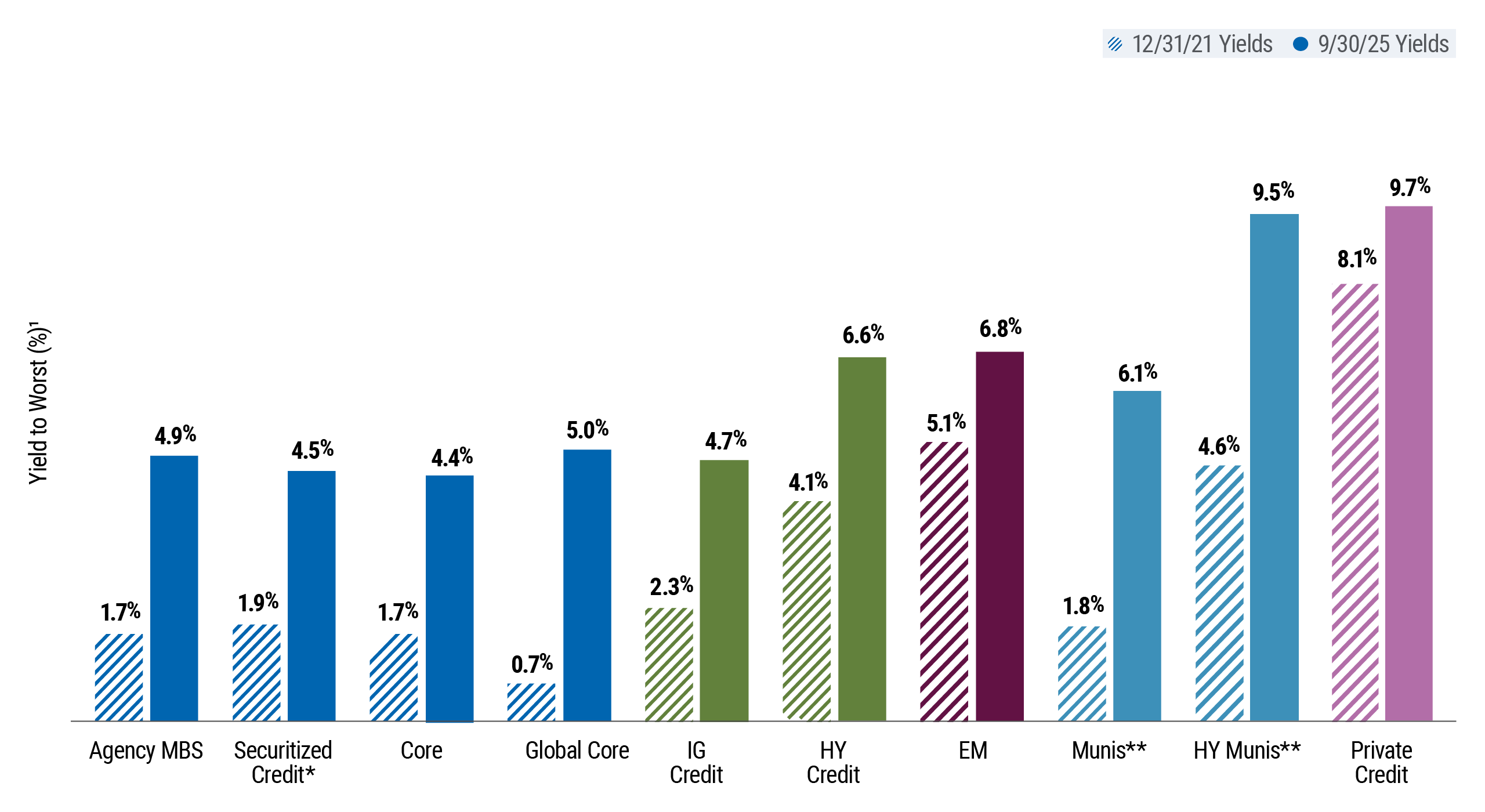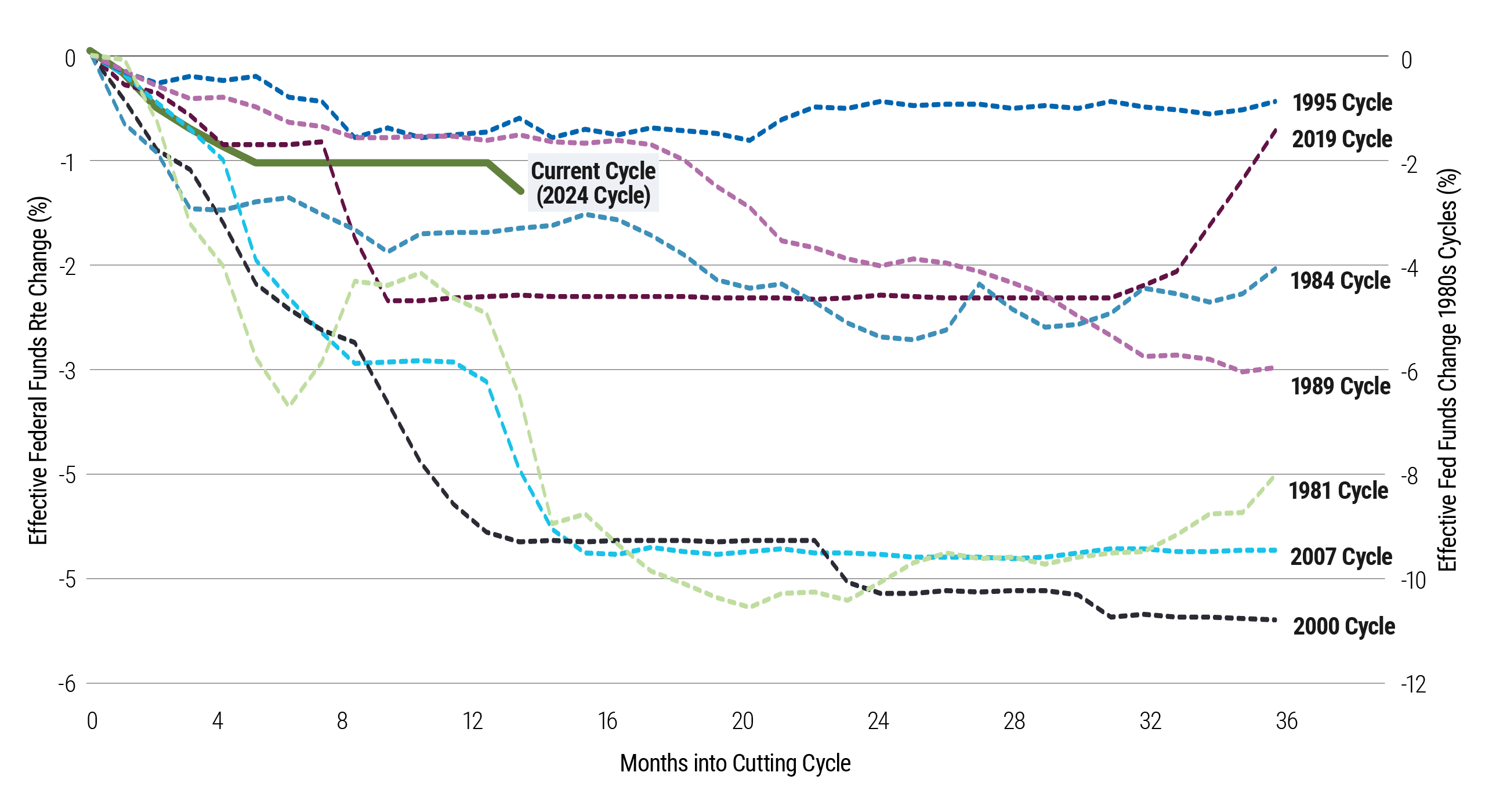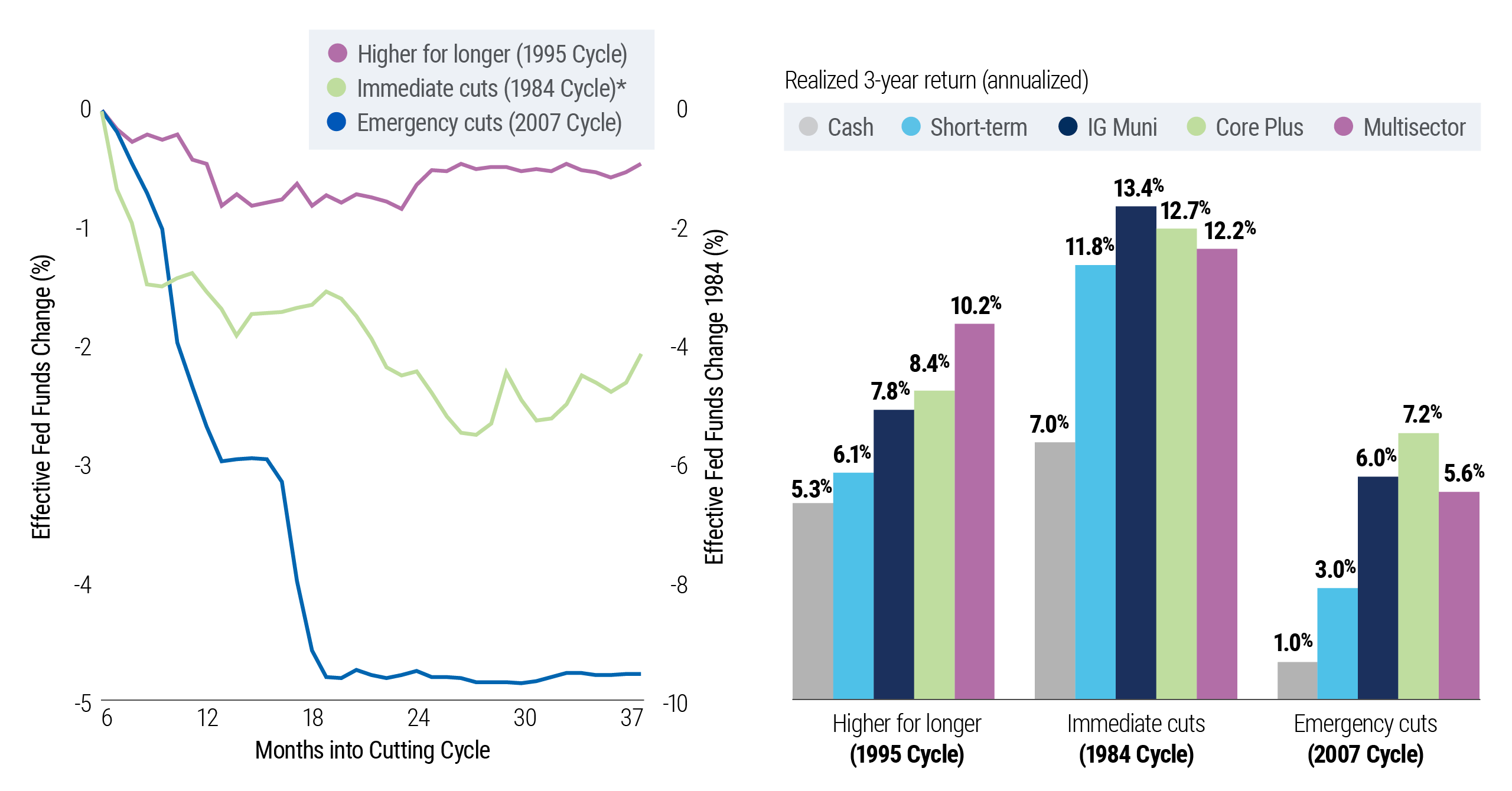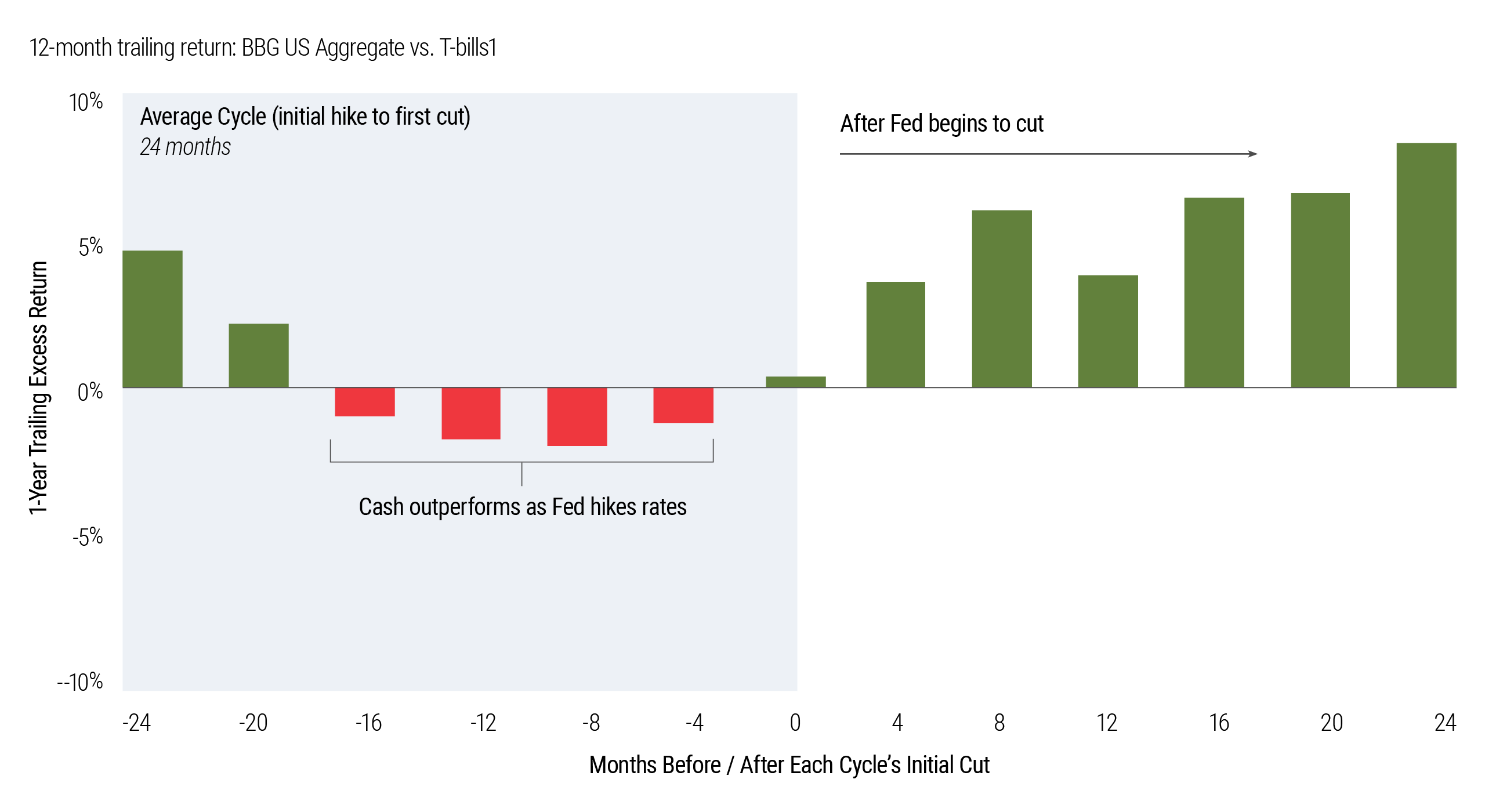Advisor Playbook

Our Latest Views
Listen in as PIMCO experts address the most frequently asked questions from clients over the past quarter. We’ll offer insights into current market dynamics, share practical observations from client conversations, and highlight how financial advisors like yourself are navigating these topics in their local practices.

Yields Across Most Fixed Income Sectors Are High vs. Recent History
What the Chart Says:
Current yields (solid bars) versus yields from over three years ago (shaded bars) across fixed income sectors. Current yields are much higher in every sector.
What it Means for Investors:
Yields are still near decade highs across most fixed income sectors. The combination of high starting yields and the potential for rates to fall creates an attractive outlook for a wide variety of bonds.
Today, yields are at a much stronger starting point when compared to Q4 2021

As of 30 September 2025. SOURCE: Bloomberg, PIMCO.Index proxies for asset classes displayed are as follows: Agency MBS: Bloomberg MBS Fixed Rate Index, Munis: Bloomberg Municipal Bond Index, HY Munis: Bloomberg HY Muni Bond Index, Core: Bloomberg U.S. Aggregate Index, Global Core: Bloomberg Global Aggregate ex-US Index (USD Hedged), HY Credit: Bloomberg U.S. Corporate High Yield Index, EM: JPMorgan EMBI Global, IG Credit: Bloomberg US Credit Index; Private Credit: Market estimates for yield.
* Securitized Credit computed as average of CLOs, CMBS, and ABS from JPMorgan and Bloomberg.
** Municipal yields are the taxable equivalent yield, adjusted by the highest marginal tax rate (40.8%). Unadjusted IG Muni index yield is 3.7% with a change of 264bps compared to 12/31/2021 levels, the unadjusted HY Muni Index yield is 5.3% with a change of 254bps compared to 12/31/2021 levels.
1 The yield to worst is the yield resulting from the most adverse set of circumstances from the investor’s point of view; the lowest of all possible yields.
Today’s Cutting Cycle in Historical Context
What the Chart Says:
This chart compares the pace and magnitude of the current Fed cutting cycle to historical Fed cutting cycles since 1981.
What it Means for Investors:
While the current Fed cutting cycle has been measured to this point, taking the range of historical outcomes into consideration can help inform active decisions and manage risk
The current Fed cutting cycle vs previous cycles since 1981

As of 30 September 2025. SOURCE: Bloomberg, PIMCO.
Cutting cycles start: 30 June 1981, 30 September 1984, 31 May 1989, 30 June 1995, 31 December 2000, 30 September 2007, 31 July 2019, and 31 August 2024. The starting Fed Funds rate for each cycle was: 19.1% (June 1981); 11.3% (September 1984); 9.8% (May 1989); 6.0% (June 1995); 6.4% (December 2000); 4.9% (September 2007); 2.4% (July 2019); 5.3% (August 2024); *The 1981, 1984, and 1989 cycles are shown on the secondary axis (RHS) to show proportionate yield moves given the significantly higher starting rates versus other cycles.
Bonds Historically Outperform Cash Even if Cash Rates Remain Higher for Longer, but to a Greater Degree if Rates Fall
What the Chart Says:
The potential path of rates as well as the estimated 3-year return of various Morningstar categories if current yields follow paths taken in the ‘84, ‘95, and ‘06 Fed cycles.
What it Means for Investors:
While the pace of further Fed cuts may be uncertain, history shows that even if rates stay higher for longer, like in ’95, higher starting yields and capital appreciation supported traditional fixed income over cash
Historical cutting cycles & Falling Yields Supported Fixed Income Performance Relative to Cash

As of 30 September 2025. SOURCE: Bloomberg, PIMCO. For illustrative purposes only. Figure is not indicative of the past or future results of any PIMCO product or strategy.
There is no assurance that the stated results will be achieved.
1 We select three historical case studies to illustrate three very different outcomes for the path of the Fed Funds rate after rates hit their peak level in each cycle.
Cutting cycles start: 30 September 1984, 30 June 1995, and 30 September 2007. The starting Fed Funds rate for each cycle was: 6.0% (June 1995); 11.3% (September 1984); 4.9% (September 2007); 5.3% (August 2024);
*The 1984 cycle is shown on the secondary axis (LHS) to show proportionate yield moves given the significantly higher starting rates versus other cycles.
Cash: FTSE 3-Month Treasury Bill Index; Short-Term: Morningstar Short-Term Bond Category; IG Muni: Morningstar Municipal National Long Category; Core Plus: Morningstar Intermediate Core-Plus Category; Multisector: Morningstar Multisector Bond Category; Corporate: Morningstar Corporate Bond Category
Historically, Fixed Income Has Outperformed Cash Well After the Cutting Cycle Begins
What the Chart Says:
Trailing 12-month return on a diversified fixed income portfolio compared to cash in months before and after the end of hiking cycles since 1980. Green (red) bars show outperformance (underperformance) versus cash.
What it Means for Investors:
At this point in interest rate cycles, bonds have tended to outperform cash. Fed rate cuts have historically supported fixed income performance while also eroding cash returns.
Fixed Income Performance Across Cutting Cycles

As of 30 September 2025. SOURCE: Bloomberg, PIMCO. Past performance is not a guarantee nor a reliable indicator of future performance. 1 Hiking cycles are defined as periods where the Federal Reserve embarks on a sustained path of increasing the target Fed Funds rate and/or target range. We define the end of a hiking cycle as the month where the Fed reaches its peak policy rate for that cycle (i.e., it either pauses rate hikes or cuts). Hiking cycles include (start to peak), 1980 (Jul ‘80 to May ‘81), 1983 (Feb ‘83 to Aug ‘84), 1988 (Feb ‘88 to Mar ‘89), 1994 (Jan ‘94 to Feb ‘95), 1999 (May ‘99 to May ‘00), 2004 (May ‘04 to Jun ‘06) and 2015 (Nov ‘15 to Dec ‘18). Cutting cycles start: 30 June 1981, 30 September 1984, 31 May 1989, 30 June 1995, 31 December 2000, 30 September 2007, and 31 July 2019.
Resources for you and your clients
-
Advisor Materials
-
Client Materials
Accrued Interest Podcast
The podcast built for Financial Advisors. Join Greg Hall, Head of U.S. Global Wealth Management, as he dives into timely topics each month with special guests that will help shape your client conversations and investment ideas.

Get Started
This is a carousel with individual cards. Use the previous and next buttons to navigate.
We're Here to Help
Contact your PIMCO Team:
connect@pimco.com
Sales Desk Phone Number:
(800) 880-8684
